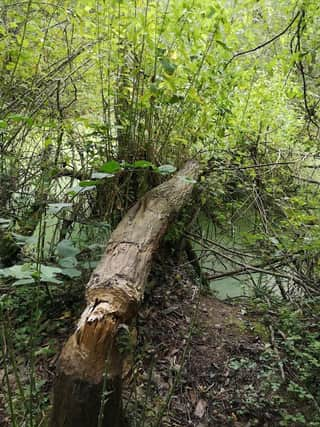Environment: Bringing back Beavers to our area will reduce flooding risk


So much so, I booked myself on a Beaver Enclosure Tour at a wildlife centre near Retford. The Idle Valley Nature Reserve is the home of Nottinghamshire's only beavers.
My guide was Elliott Kean, who really knew his stuff and gave us an extremely interesting afternoon. I highly recommend booking a visit on the Nottinghamshire Wildlife Trust website.
Advertisement
Hide AdAdvertisement
Hide AdThe Eurasian beaver is a large herbivore (plant eater), a mammal native to the UK that was once widespread. Beavers played a crucial role in our wetlands from prehistoric times. They were hunted to extinction in the 16th century for their fur, meat and scent glands that were used for perfume and medicine. The loss of this charismatic species led to a loss of lakes, meres, mires, tarns and boggy places they so brilliantly built.
Beavers are slowly being reintroduced to the UK. They're known as keystone species and ecosystem engineers, famous for their ability to transform landscapes, boost biodiversity, alleviate flooding, and capture carbon.
The Idle Valley beaver enclosure is one of the largest in the UK with space for up to 18 beavers - that's 3 families of 6 in three separate territories. It is possible that their offspring might be relocated to the Sheffield area.
The beavers manage their environment in ways that benefit other species. They remove willow from reedbeds, which will improve habitat for bittern and snipe. Piles of wood in the water benefit aquatic insects and fish. Small channels and scrapes create habitats for spawning amphibians.
Advertisement
Hide AdAdvertisement
Hide AdNottinghamshire Wildlife Trust is working with Nottingham Trent University to monitor the longer-term impact of the beavers and plan to identify opportunities to improve habitats further for vulnerable species such as otters, water voles, bittern, turtledove and nightingale.
The long-term vision is to enhance, protect and connect habitats as part of efforts to ensure 30% of land across the UK can support nature’s recovery by 2030.
Councillor Douglas Johnson, who is Sheffield Council's representative on the Yorkshire Regional Flood and Coastal Committee, said “As the risk of catastrophic flooding increases due to climate change, more attention is being turned to Nature-Based Solutions. I have argued that funding for flood risk management needs to focus more on natural flood management as a way of future-proofing climate change resilience. So I am really pleased we have this innovative source of funds to support a beaver project.
“The study gives us the opportunity to examine the issues close to a major city, where thousands of homes and businesses are at risk of flooding.
Advertisement
Hide AdAdvertisement
Hide Ad“By slowing down the rate of water flow from the large upland areas to the west of Sheffield, we have the potential to safeguard homes, businesses and infrastructure in our city and further downstream in Rotherham and Doncaster.
The Idle Valley beavers live in a fairly flat area, with lots of lakes and wetlands. As they have plenty of depth of water and don’t have access to the river, they haven’t built any dams. But if beavers were released in the hills around Sheffield their engineering instincts would soon have them slowing the flow of our rivers, reducing the risk of flooding.
Beverley in East Yorkshire gets its name from Beavers - as does Bevercotes, six miles south of Retford. They were once as much a part of our ecosystem as they are in Canada today. Beavers in Devon, Northumberland and Argyll have been released in the wild and are providing many benefits to the ecosystem and to humans.
George Monbiot wrote the groundbreaking book “Feral” about re-wilding. He writes “listening to the small but powerful group of landowners fighting to prevent beavers' reinstatement in this country you would mistake the species in question for a sabre-toothed cat or a velociraptor.”
Advertisement
Hide AdAdvertisement
Hide AdHe tells the story dating back to 1994 when Scottish Natural Heritage was trying to reintroduce beavers. They spent half a million pounds and 10 years assessing every possible danger the beavers might present but then had to give up due to the opposition from landowners. Six years after the negotiations one of the men who owned the fishing rights on Scotland's rivers exclaimed “I hear what you say, and I can understand why some people like these animals, but I will not have them coming into my river and eating my fish.”
There was a deathly silence as the biologists realised that, through all these years of diplomacy and explanation, he still had not accepted that beavers are herbivorous.”
Another objection to beavers is that they cut down trees. But trees they fell tend to be those which coppice or sucker well, such as aspen, willow, and ash. The scrub this creates beside the rivers provides shelter for birds and mammals and the coppiced trees naturally regenerate.
Others say beavers spread disease. But the truth is they could reduce it, as their dams filter out the sediments containing faecal bacteria.”
If we can manage to get beavers reintroduced within the city boundary they will do us and nature a great service.